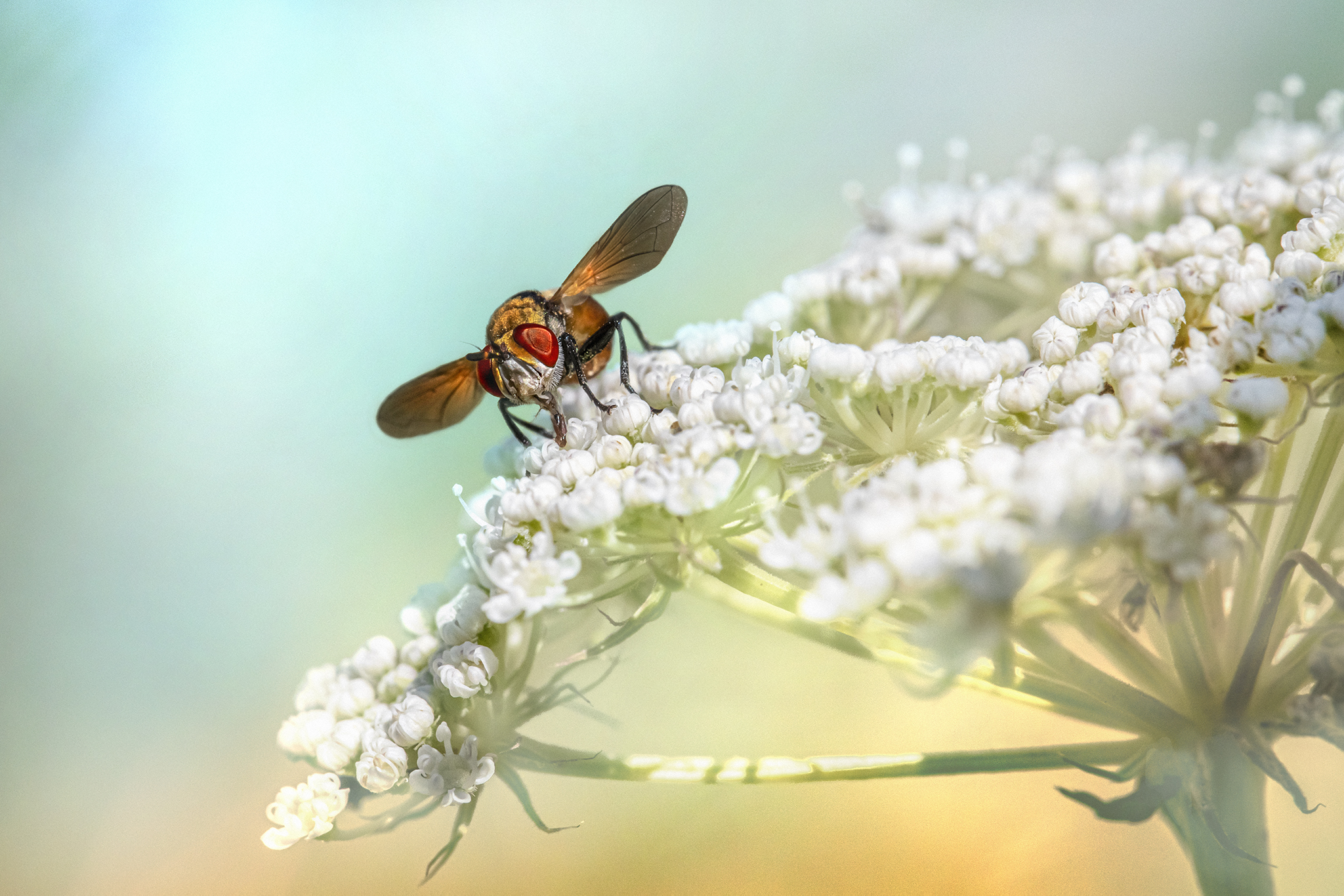Tachinid flies are a diverse family of insects belonging to the order Diptera, known scientifically as Tachinidae. Here’s a detailed description:
Physical Characteristics: Tachinid flies exhibit a wide range of sizes, shapes, and colors, with over 10,000 described species worldwide. However, they generally share certain characteristic features, including stout bodies, bristly hairs covering their bodies, and distinctive wing venation. Many species have brightly colored or patterned abdomens, while others are more cryptically colored to blend in with their surroundings.
Habitat and Distribution: Tachinid flies are found in diverse habitats worldwide, including forests, grasslands, wetlands, and urban areas. They are especially abundant in temperate regions but can also be found in tropical and subtropical environments. Tachinid flies occupy various niches within their habitats, with some species being generalists and others specializing in parasitizing specific host species.
Behavior and Life Cycle: Tachinid flies are parasitoids, meaning their larvae develop as parasites within or on the bodies of other insects. Adult females typically lay their eggs on or near potential host insects, often targeting caterpillars, beetles, flies, or true bugs. Once hatched, the tachinid fly larvae burrow into the host’s body, where they feed and develop, eventually emerging as fully grown adults. The life cycle of tachinid flies varies depending on species and environmental conditions, with some completing multiple generations per year.
Ecological Importance: Tachinid flies play a vital role in regulating insect populations and maintaining ecological balance in their habitats. As parasitoids, they help control the populations of potential pest species, reducing the need for chemical pesticides in agriculture and natural ecosystems. Tachinid flies are also important pollinators, contributing to the pollination of various plant species as they feed on nectar and pollen.
Interactions with Humans: While tachinid flies are generally beneficial insects, some species can be pests of agricultural crops or cause nuisance problems in urban areas. For example, certain species may parasitize economically important insects such as livestock pests or crop pollinators, leading to reduced yields or economic losses. However, the overall ecological benefits provided by tachinid flies outweigh their occasional negative impacts on human activities.
Conservation: Given their ecological importance and potential contributions to sustainable agriculture and pest management, conservation efforts aimed at preserving tachinid fly populations and their habitats are essential. Protecting natural habitats, minimizing habitat destruction, and promoting agroecological practices that support diverse insect communities can help maintain healthy populations of tachinid flies and other beneficial insects.
Overall, tachinid flies are fascinating and ecologically valuable insects, valued for their role as natural enemies of pest species and their contributions to ecosystem functioning. Understanding their biology, behavior, and interactions with other organisms is essential for conserving their diversity and maximizing their beneficial effects in agricultural and natural ecosystems.
Views: 51
Subscribe to the newsletter:
